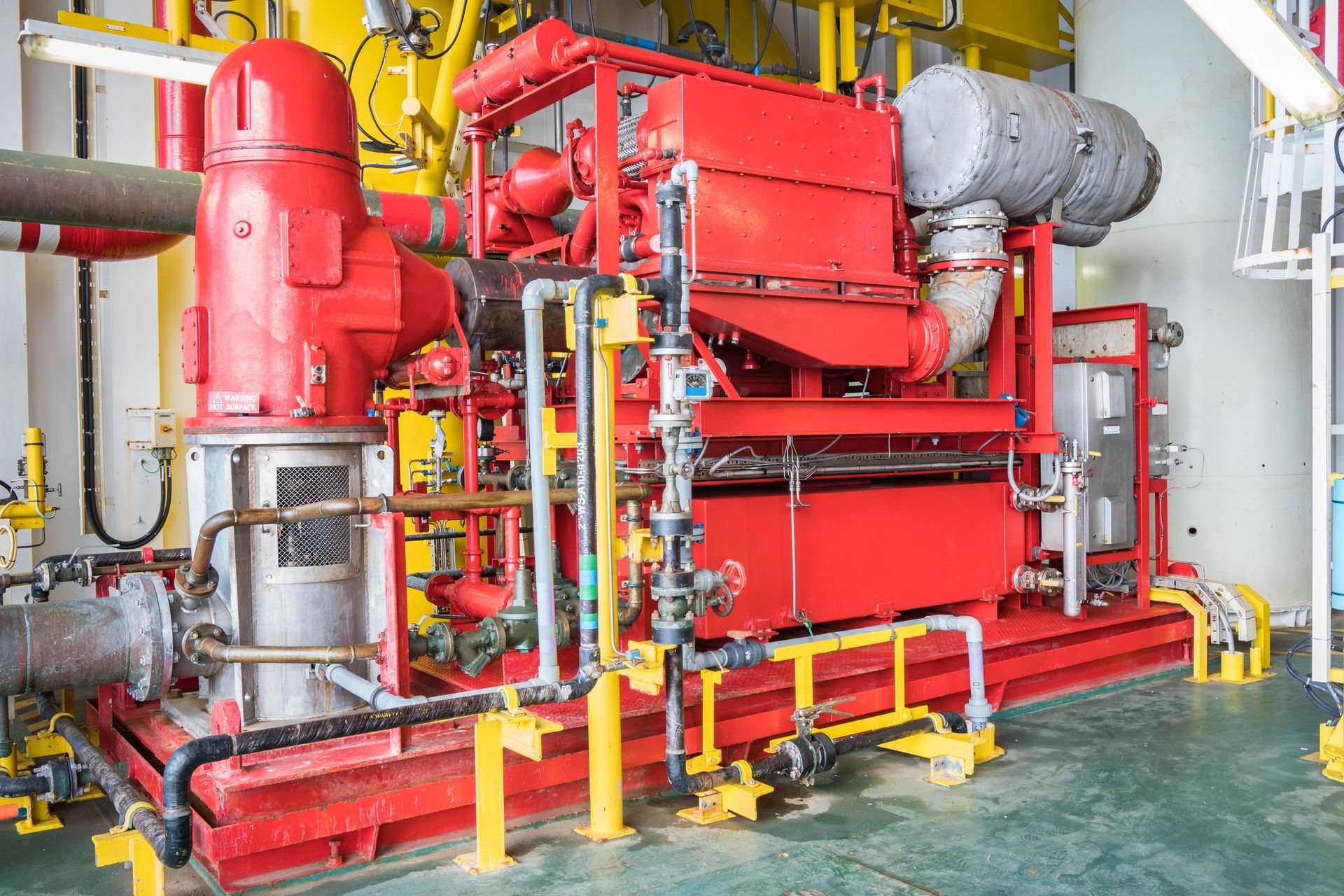Discover Reliable Rigging Equipment Solutions
In the industrial world, the significance of selecting high-quality equipment cannot be overstated. Rigging equipment is at the heart of ensuring safety, boosting efficiency, and reducing costs in many operational setups. When the right tools are employed, the risk of accidents diminishes significantly. Moreover, efficient operations lead to cost-effectiveness by minimizing downtime and maximizing productivity. According to Business Research Insights, the global industrial rigging service market is anticipated to reach USD 5.26 billion by 2033, underscoring the growing demand for dependable rigging solutions.
Choosing the right equipment is more than a financial investment; it's an investment in safety and operational excellence. Ensuring that workers are protected from potential hazards is a critical concern for businesses. Having reliable rigging is vital for maintaining seamless operational flow, which directly influences a project's success. The growing market demand for rigging solutions is driven by the desire to achieve higher safety standards, efficiency, and operational reliability. Choosing the right equipment can mean the difference between successful projects and costly mishaps.
Types of Rigging Equipment
The world of rigging is vast, encompassing various tools essential for lifting and moving heavy loads. Common types include hooks, slings, winches, hoists, shackles, blocks, and pulleys. Each piece plays a specific role in facilitating secure lifting and efficient movement. Not only do these tools vary in design, but their materials and capabilities also adapt to diverse operational needs. Selecting the correct type based on task requirements ensures that the rigging process runs smoothly and without unnecessary complications.
Different rigging tasks call for unique equipment, often differing by their size, load capacity, and function. For instance, ropes and slings are typically used for lighter loads, while chains and hoists are needed for heavier lifting. Knowing the distinctions can significantly aid in determining the safest and most effective equipment for a job. Furthermore, these tools must adhere to specific industry standards to ensure they meet safety and performance guidelines. Innovating and developing rigging tools to meet growing industry needs continues to be a critical factor in their effectiveness and popularity.
Understanding the basics of rigging involves recognizing the material properties that contribute to their strength and safety. Metals used in manufacturing, such as steel and aluminum, are selected for their durability and load-bearing capacities. The quality of build and resistance to wear and tear are critical attributes that influence the longevity of rigging equipment. Integrating engineered designs with superior materials ensures these tools remain reliable across diverse working conditions. Thus, a thorough understanding of basic rigging tools allows for informed decisions when selecting the most suitable equipment for a project.
Common Applications of Rigging Equipment
Rigging is employed across various industries, including construction, shipping, manufacturing, and entertainment. Each industry utilizes these tools to move large loads, assemble structures, or position materials in precise locations. In construction, rigging is often synonymous with lifting steel beams, installing machinery, and moving precast concrete. Shipping industries depend on rigging for loading and unloading heavy cargo, whereas in manufacturing, it's used for assembly line movement. Understanding these common applications is pivotal for selecting suitable equipment tailored to the specific logistical demands of a project.
The efficacy of rigging in common applications can influence the safety and productivity of a worksite. In theater and entertainment, rigging is used for setting up stage equipment and ensuring smooth scene changes. This highlights the precision and delicate handling required in environments where accuracy is crucial. In sectors like oil and gas, specialized equipment transports piping and machinery safely across offshore platforms. Each application necessitates an understanding of the peculiarities inherent to its environment to identify the most effective rigging solutions.
Key Material Properties of Rigging
The materials used in rigging equipment are a critical determinant of their effectiveness and safety. Metals like high-strength steel and aluminum alloys are common in manufacturing rigging tools due to their excellent load-bearing characteristics. They offer a robust and durable solution for environments where heavy lifting and resistance to wear are necessary. Each material provides distinct benefits and limitations that must be factored into decision-making when selecting equipment. The choice of materials often balances weight, cost, durability, and resistance to environmental conditions to create optimal solutions for various tasks.
For lighter applications, synthetic materials such as nylon or polyester are used because of their flexibility and ease of handling. These materials are particularly useful for slings, where a non-corrosive, lightweight, and adaptable material is required. Additionally, synthetic materials have the advantage of being less prone to damage from kinked or twisted links, a common issue with metallic slings and chains. Understanding these material properties is crucial for ensuring safety through the appropriate strength and resistance needed for specific tasks. Material innovations continue to play a vital role in creating responsive and efficient equipment for modern needs.
Load Capacity and Rigging Safety
Understanding load capacity is fundamental to using rigging equipment safely and effectively. Each piece of equipment is designed with specific load limits, which are critical in preventing overloads that lead to equipment failure and accidents. Rigging manufacturers adhere to stringent specifications for load ratings to ensure safe use under ideal conditions. It is imperative for operators to calculate the actual load, considering factors like weight, dynamic forces, and environmental conditions, before selecting the appropriate equipment. Operating within these load capacities preserves the equipment's integrity and ensures safety for operators and surrounding personnel.
It's important to consider safety mechanisms built into the equipment, such as overload indicators and automatic locks, which can prevent mishaps during operations. These safety features serve as critical fail-safes to protect against human errors or unexpected shifts in load dynamics. Furthermore, consistent training and adherence to procedures ensure that users can effectively use these safety features. Emphasizing regular inspections helps identify potential issues before they lead to serious problems, maintaining the integrity of rigging operations. Safety is an outcome of consistent practices that align with well-understood equipment capabilities and limitations.
Industry Standards and Rigging Guidelines
Industry standards and guidelines play a pivotal role in shaping the design and use of rigging equipment by establishing safety benchmarks. Compliance with standards such as those from the Occupational Safety and Health Administration (OSHA) or the American National Standards Institute (ANSI) ensures operations remain legally compliant and safe. These organizations provide in-depth criteria concerning material quality, operational limits, and maintenance for various rigging tools. Rigging equipment manufacturers design their products to surpass these mandatory standards, offering users maximized efficacy and safety. Adhering to these guidelines is not merely a legal obligation but a commitment to operational excellence and workforce protection.
These standards are regularly reviewed and updated to incorporate technological advances, improving equipment reliability and safety. They cover many aspects, including load ratings, equipment testing protocols, safety measures, and environmental considerations. Having reliable equipment ensures projects remain safe and within the guidelines, which directly affects organizational productivity and reputation. Rigging standards and guidelines help businesses establish comprehensive operational protocols, implementing the safest methods possible for every situation. This adherence is especially crucial in high-risk environments, where the slightest oversight can have severe consequences.
The selection and proper use of rigging equipment are critical pillars of safety, efficiency, and cost-effectiveness in industrial operations. By understanding the types of equipment available, their material properties, load capacities, and the industry standards governing their use, businesses can make informed choices that directly impact project success. High-quality rigging tools not only prevent accidents and equipment failure but also promote seamless workflows that reduce downtime and improve productivity. Do you need rigging equipment for a job? Contact American Solving Inc. to request a consultation today.





Share On: